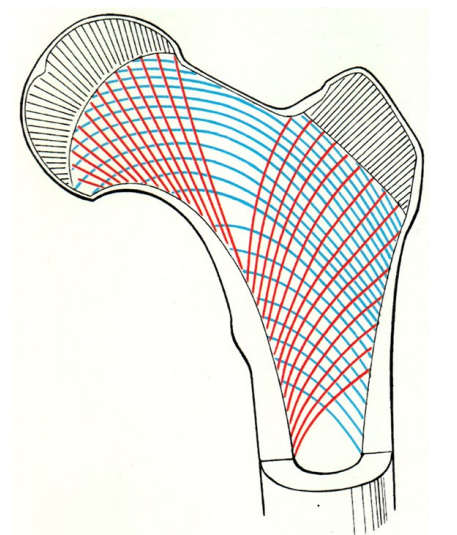
Mechanical examination of the spongy structure of bone ends
Our bones are constantly developing, rugged organs. As we know from our daily activities, they can withstand repetitive loads, they are made of a sufficiently hardy material. They consist of active connective tissue, that is, the tissues that make up the bone are constantly broken down and regenerated (they are completely replaced in 7-10 years), therefore they are able to adapt over time to higher loads. This is how the body of weightlifters becomes able to carry more weight. And astronauts returning to Earth, after a long period of weightlessness, are unable to move their own body weight, and they have to relearn how to walk.
The shape and structure of the bones is no accident: they must provide the most favorable mechanical properties from the least amount of material. It is known that their backups are small. In the case of long bones, the ends are a little thicker, because this is where the tendons are attached. The burdens pass from one bone to another at the ends of the bones. The structure of the middle part of the bone is hollow inside, on the outside it is formed by solid bone tissue. The bone ends are formed from the outside by thinner solid bone tissue, but the inner hollow part is filled with many small beams that convey the load on the bone center.
The hypothesis of the study is that the bone ends were formed not only because of the minimization of material use in a beamed way instead of solid, but also because of the more favourable structure for possible fractures, since it is more difficult to develop a passing cold fracture in this structure. I examined the hypothesis with two-dimensional numerical models: a solid rod model and a rod model simulating mesh construction following the main voltage trajectories calculated in the solid model. During the examination I gradually loaded the bone ends with increasing force and examined the fractures and deformations. The results of the studies show that the relative dimensions of the bone centre and the bone ends have a significant influence on the evolving fracture image. The hypothesis is confirmed by the fact that the density of the networked structure was markedly higher than that of the concise arrangement.